Plum Stanley: description, advantages and cultivation of the variety
If you have your own personal plot, any gardener will not give up the opportunity to root 2-3 fruit trees on his own plantation. The best option for landing are apple trees, cherries and plum... For the rooting of the latter, it is recommended to choose the most suitable variety.
To get consistently bountiful harvests, you should pay attention to the Stanley plum. Before purchasing a seedling, you need to familiarize yourself with the main points of soil preparation and planting dates.
Content:
- Description and benefits of the variety
- Site and soil preparation for planting
- Landing terms and rules
- Variety Care Tips
- Pruning and preparing for winter
- Diseases and pests, the fight against them
Description and benefits of the variety
The Stanley plum belongs to the revered variety. This variety belongs to high-yielding horticultural crops that easily tolerate a strong drop in temperatures in winter, and during the growing season it produces large and richly tasting fruits. The Stanley plum variety was bred quite a long time ago - more than 100 years ago, in 1912 in the American town of Wellington R. The culture was obtained by crossing two species: the French D'agen and the American Grand Duke. The result is a late-ripening variety - Stanley.
A variety of fruit trees came to Russia only in 1983. In most cases, the plant is grown mainly in the south of the country - in the Kuban and Crimea. The tree grows undersized, only up to 3 m. In height, while it has a round oval shape, medium foliage thickening. The tree has a gray bark with a dark overflow. The branches are straight, with age they slightly begin to peel and crack.
There are thorns on the shoots, but in a minimal amount. During the growth period, the shoots acquire a raspberry-purple tone, which becomes a standard gray shade with age. On the branches, internodes are evenly spaced from each other at a size of 3-3.5 cm. The vegetative buds appearing in spring do not exceed 21-30 mm in size. They have a conical shape, with a pointed tip.
When blooming, the leaves grow to medium size and are 7-7.5 cm in length and 5-5.4 cm in width. They have the shape of a circle, but the top of the greenery is obtuse. The shade of the leaf blade is a bright green tone. Small denticles run along the edge of the leaf plate. The surface of the leaves is glossy, playfully shimmers under the streams of sunlight. There is slight pubescence on the underside of the leaf.
Each leaflet is located on a small petiole, they have an average length and in most cases do not exceed 1.9-2 cm. In a flower bud, 1-2 inflorescences are usually formed. The flowers themselves are quite large, reach up to 3 cm in diameter, have a snow-white color. Inflorescences are somewhat concave, have wavy edges. The tree blooms by the second decade of April. The plant bears fruit starting from the 4th year of life.
The fruit of the Stanley plum is dense, blue in color.
The surface of the berry has a slight bloom. The fruit stands out in its original dark blue color.The plum has an egg-shaped structure, but in the middle there is a characteristic seam that divides the berry into 2 hemispheres. The skin of the berry is thin, practically does not separate from the internal structure. The pulp is dense inside, yellow in color with a slight green splash. The berry tastes sweet, without sourness, with a fragrant smell. Inside there is an oblong bone, which is easily separated from the pulp.
When choosing this plant for planting, you must know in advance all its advantages and disadvantages. First of all, the advantages of a fruit crop are highlighted:
- Increased productivity.
- Excellent keeping quality and transportability of berries over long distances.
- The versatility of the purpose of the harvested fruits (can be used both for seaming for the winter and for fresh consumption).
- Berries are tasty, high quality, large and aromatic.
In contrast to all the pluses, the plant requires increased care for itself. The tree is afraid of drought, for planting it requires a certain soil and frequent feeding. Plum Stanley actively attracts a variety of pests, and is also often exposed to the development of diseases. In addition, the fruits of the culture are late-ripening.
Site and soil preparation for planting
In order to successfully grow a capricious Stanley plum in your garden, you need to know the main points of planting plants of this type, as well as certain rules that apply only to a unique beauty. When choosing a seedling for rooting, it is recommended to decide in advance in which area it will be grown: if in warm regions, then a self-rooted sprout will do. Otherwise, for colder climates, it is better to take a rootstock seedling.
For the active and rapid growth of the seedling, you need to find a good place.
The area where the tree will be located should be as warm and sunny as possible. It is worth choosing such an arrangement for the plum, so that there are no large neighbors of fruit crops nearby. Otherwise, they will draw out nutrients and water necessary for a young seedling from the soil.
It is best if the young tree is located in a place where it will be protected from cold northerly winds and winter drafts. Plum Stanley is a sun-loving plant that prefers hills, a distant location of underground and groundwater and a south side for placement. Although the culture is a moisture-loving tree, lowlands and frequent stagnation of moisture are not suitable for it.
In addition, it is necessary to comply with the requirements for the selection of soil - it must be nutritious, saturated with useful mineral and organic substances. sandy loam and loamy soils with a slightly alkaline or neutral pH environment are ideal for planting.
Preparing the soil for planting is carried out according to the following rules:
- On the selected site, an area of 2 m should be dug onto a shovel bayonet. After that, it is required to add 50 grams per 1 m2 of this area. superphosphate, 5 kg of humus and 20 gr. potassium salt. This event should be carried out 2-4 weeks before the expected time of planting the seedling for permanent residence.
- After that, on the selected area, you should dig a hole according to the scheme - 60x70 cm.In addition, you need to plant pollinator trees. Without them, the crop will not give the required amount of harvest. It is necessary to arrange auxiliary trees at 3 m. From each other.
- The soil dug out of the deepening should be mixed with humus and peat in a volume of 15 kg, and also saturate the soil with superphosphate (0.3 kg), potassium salt (0.06-0.07 kg) and ash (0.5 kg). In this case, the acidity of the soil substrate should be identified. If the latter exceeds 7.2 pH, then it is necessary to add dolomite flour additionally.
- The next step is the resulting mixture from the soil and organic and mineral fertilizers put in a hole, so that the composition fills the depression by 2/3.
- It is necessary to drive a stake from the side of the pit.
Thanks to preparatory work in the ground, the seedling will not acclimate for a long time and will quickly grow.
Landing dates and rules
Rooting of the Stanley plum can be done in the autumn and in the spring. If the landing is carried out in late September - early October, then it is necessary to take into account the weather conditions and engage in planting work 30-45 days before the onset of the first frost. This will allow the tree to grow its root system, take root in a new location, and survive the winter safely. In this situation, the tree takes root much worse than when planting in spring.
In the spring, the seedling should be buried until the beginning of sap flow. In March - April, after completing the rooting procedure, you can immediately recognize whether the tree has taken root or not. The main thing is to monitor the state of the plantings and, if necessary, perform rehabilitation work.
With a prepared hole, disembarkation must be carried out according to certain rules:
- If a seedling is transplanted with a clod of earth, then it is immediately rearranged into a depression and sprinkled with nutritious soil on top. The event is carried out in such a way as not to fall asleep in the vaccine.
- If the root system of the seedling is open, then it is necessary to first examine all the rhizomes and identify damaged or affected areas. If there are any affected areas, they should be carefully removed with a clean, pre-disinfected garden tool, and sprinkled on top with ash or activated carbon.
- After that, it is necessary to straighten the rhizomes and set the central part of the rhizomes of the tree to a kind of elevation formed during preparation. The tree is required to be placed on the left side of the previously buried stake. The soil is poured on top of the rhizomes.
- During the filling of the earth, the seedling must be slightly raised, allowing the earth to penetrate into the narrowest cracks between the rhizomes. This is necessary so that no empty cavities remain in the roots of the plum, where water can stagnate, provoking the development of diseases.
- Care must be taken not to deepen the root collar together with the roots. It should look out on the surface from the ground by 5-6 cm.
- Having filled up the soil near the seedling, it is necessary to compact it well near the base of the rhizomes. Then make a small groove at a distance of 30-40 cm around the trunk. This is required so that the nutrient moisture does not leak out, but completely nourishes the fruit plant.
- After the planted tree, it must be tightly tied to the support. The soil near the base must be mulched. Humus or peat is suitable as mulch.
The next stage of burying a seedling is its pruning. It is necessary to remove all the growth of the tree, above 70 cm. For further cultivation, specific care will be required.
Variety Care Tips
In order for the Stanley plum to give a consistently good harvest and delight with appetizing, rich fruits, the following requirements for its care must be fulfilled:
- Watering - regular, plentiful. The introduction of nutritious moisture is recommended to be carried out according to the established plan, 6 times during the growing season: immediately after the flowering of the buds, after 14 days - 2 times, then after harvesting and again after 2 weeks. The last introduction of nutrient moisture occurs in the last days of September or the first decade of October. If watering occurs during the rainy season, then the procedure does not need to be performed.
- Loosening - this should be done after each application of moisture. The procedure is carried out to a depth of 8-12 cm, but so as not to hurt root system.
- Top dressing - the first fertilization is carried out in the 2nd year of life. The event is carried out in almost the same way as watering, at certain periods: in May, June and at the end of August. During fruiting, the fertilization scheme is somewhat changed: before flowering, during fruiting, and also after harvesting.
To prevent the appearance of diseases and parasites, the plant must be sprayed and sanitized in the autumn and spring periods.
Pruning and preparing for winter
Pruning for a plum tree is as necessary as for any fruit crop. It has a beneficial effect on the formation of the crown of the plant, as well as on the quality and quantity of fruits. At the time of rooting, in addition to the general shortening of the seedling to 70 cm above the ground level, all shoots are trimmed by 1/3 of the total size.
In the spring, sanitary pruning is additionally carried out. It is necessary in order to eliminate all shoots beaten during the winter by frost or damaged by strong hurricanes. In addition, in the winter, various parasites can hibernate in the bark, which feed on the internal sap of the plum, which leads to the death of the entire plant, if the damaged area is not removed in time.
Sanitary pruning is done as soon as the buds begin to burst. It is necessary to remove without sparing all the kidneys affected by the pest to the healthy area. All root sprouts are also subject to cutting.
But it is not worth it to overuse it with the elimination of excess growth, it is enough to shorten all the shoots of the plant by 20-25% of the total growth.
Additionally, it is worth cutting off all weak, thin and old shoots. In most cases, they are not capable of normal development and fruiting. Although the Stanley plum is a frost-resistant plant and is capable of tolerating frosts down to -340C, its young seedlings should be protected from severe frosts and insulated for winter.
The most favorable material for the plant will be nylon. It will not allow rodents and parasites to the plant, and also reliably protects the plant from frost, keeping the heat inside. But at the same time, it allows the bark to breathe, allowing the oxygen necessary in winter to pass through. To protect the root system, dry crushed peat or woody sawdust... Additionally, to protect against rodents, it is worth using a special protective mesh. When snow falls, it is recommended to cover the seedling on top with a dense white mass. It will protect against severe frosts and freezing of the root system.
Diseases and pests, the fight against them
Plum of the Stanley variety has good resistance to smallpox, but at the same time it is practically not protected from fruit rot and is often affected aphids... The most common diseases present on the drain are distinguished:
- Hole spotting - characterized by the appearance on the leaves, trunk and buds of large brown-red spots, from which, after a strong growth, gum flows out. The consequences of the disease are foliage fall and a decrease in yield. To fight, it is necessary to cut off the affected leaves and branches and burn them. For prevention, it is worth spraying the plant with a solution. bordeaux liquid.
- Fruit rot - fast-growing brown spots appear on the berries. To prevent the appearance, it is necessary to spray with Bordeaux liquid and a solution of copper sulfate. It is necessary to remove all affected fruits in a timely manner, avoiding touching healthy berries. Otherwise, a healthy fetus will soon be affected by the disease.
- Polystygmosis - is detected on the foliage of the culture with red growing spots. They grow rapidly and appear as bulging formations with spores inside. To eliminate the disease, it is necessary to remove all fallen leaves and burn it, preventing further spread of the disease.
In addition, the tree is often affected by weevils, shoot moths, aphids, or plum moths. To prevent the appearance of pests, it is necessary to process plums in a timely manner. chemical insecticides... When caterpillars appear, it is necessary to eliminate them manually, not allowing them to increase in number. The main thing is to monitor the state of the fruit tree and, when the first signs are detected, immediately begin exposure to folk remedies or chemicals.
Thus, the Stanley plum variety is a rather specific species. It has tasty, large fruits, but it takes effort to get them.In the absence of proper care, you can not count on the acquisition of an excellent harvest. In order to have a rapidly developing tree, the purchased seedling must be planted in previously prepared soil.
More information can be found in the video:



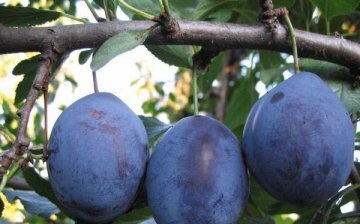
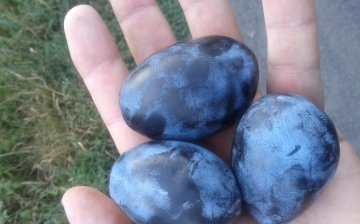
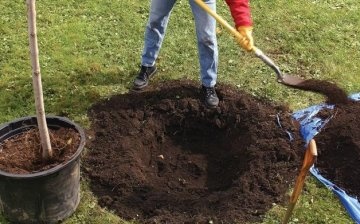

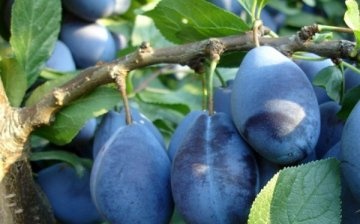
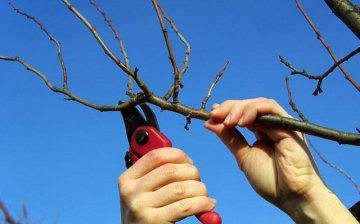
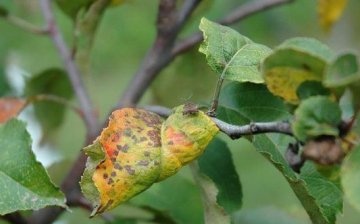







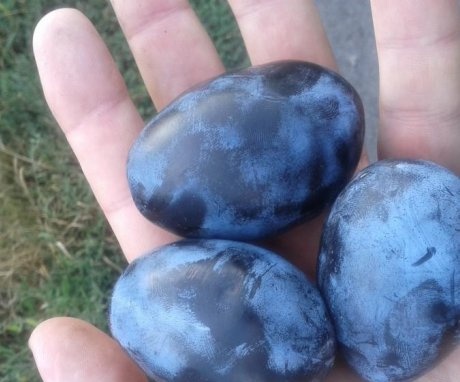
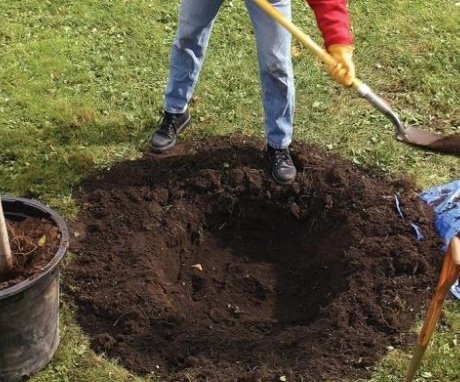

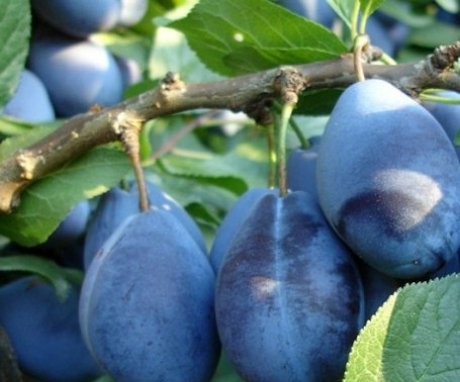
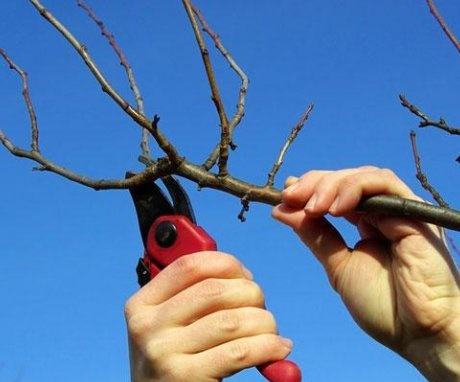
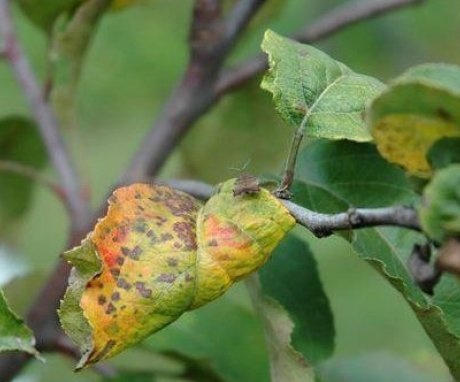
I agree that it is really difficult to imagine any personal plot without a plum, as well as without an apple or pear. I do not have such a variety, but I will try to find and plant, since the characteristics are good. I like to freeze plums for the winter and cook jam.
We have such a plum. The fruits are large, juicy, sweet. However, be sure to plant several varieties of plums in general, let them pollinate each other. And for the winter, wrap the trunk at the bottom so that the scion does not freeze.
I have tried this variety of plums - very tasty and aromatic. I just want to try to plant a tree on the site. Although this plum is whimsical to care for, I think it's worth it. The main thing is to plant so that it takes root, for this you need to fertilize the soil well and choose the right planting site.